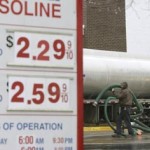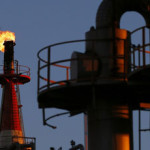Oil is expected to reach new lows – CNBC Oil Survey

OPEC is not expected to take any action this week to prop up oil prices, which have yet to hit rock bottom, according to a new CNBC Oil Survey.
Oil is expected to reach new lows in the first half of next year, according to 46 percent of the analysts and traders surveyed by CNBC. Twenty-nine percent say the bottom could come even sooner, some time this month. Twenty-one percent believe oil has already touched its lows.
Some 70 percent do not believe West Texas Intermediate crude will rise above $50 a barrel again before the end of this year, and 58 percent of the survey participants expect it to end the year between $40 and $50 per barrel. Brent, the international benchmark, is expected to end the year between $40 and $50 per barrel, according to 67 percent.
The survey was conducted between Nov. 20 and Monday.
One thing the 24 respondents agreed on unanimously was that OPEC members will not cut production at their upcoming meeting on Friday.
OPEC surprised the market last year when it dropped its strategy of using production cuts to support oil prices. It is expected to continue with that strategy even though WTI futures are struggling in the low $40s and Brent is hovering near $45 per barrel.
“I think it will be more of the same. I think the Saudis are going to continue to get pushback from the non-Gulf members who are in a lot of pain,” said Michael Wittner, global head of oil market research and head of U.S. commodities research at Societe Generale. “Everyone’s in a lot of pain. The Saudis are drawing down their reserves and issuing bonds. So it’s not easy for them either, but they’re in better shape than the likes of Venezuela, Algeria and Nigeria.”
Wittner, in an interview, said he expects the OPEC meeting to be contentious. “From what they’re publicly saying, Iran may want some acknowledgment that they’re going to return,” he said. The sanctions against Iranian oil are expected to be lifted when the final approvals come on its compliance with the nuclear deal reached with the U.S. and five other nations earlier this year.
Iranian oil is already priced into the market, according to a clear majority of respondents – 74 percent; 22 percent believe it has not been priced in.
However, the respondents were more evenly split on the timing of when Iran could return crude to the market in a significant way. About 39 percent expect it to be during the second quarter of next year, while 30 percent expect it to occur during the third quarter. Nine percent said they expect Iran could even come back as soon as the first quarter, while 8 percent said it could be much later — in the fourth quarter of next year or later. Thirteen percent said they were unsure.
OPEC has said it is will reduce production once higher cost producers cut, and even though the U.S. shale industry has been feeling the pain, it continues to produce at a high level.
More than half the respondents expect the U.S. to slightly reduce production by the end of the first half of 2016 from the 9.2 million barrels a day it has recently been producing. Thirty percent see a significant decrease in U.S. production in that time period. Oil production in the U.S. peaked this year at 9.6 million barrels a day, according to government data.
Oversupply and growing inventories continue to pressure prices, according to some of those surveyed.
“We are 211 million barrels above the five-year average. That’s the biggest surplus ever,” said Kyle Cooper, managing director of research at IAFA advisors and Criterion Research. Cooper said the market can only stabilize when supply stops building. Cooper said the U.S. storage of oil and other hydrocarbons is also 189 million barrels ahead of last year.
“Market sentiment remains weak and perhaps overly so,” wrote Helima Croft, chief commodities strategist at RBC Capital Markets. “Key bearish headlines continue to capture the imagination of the market. While fundamentals are far from rosy, supply and demand balances have tightened since the peak oversupply of the summer.”
If OPEC does not cut production as expected, 87 percent see no change in Russian production, while 14 percent see a slight increase. A solid majority, 77 percent, expect China’s oil demand to rise in 2016, while 17 percent expect it to remain unchanged.
CNBC Oil Survey, December 2, 2015
Source: CNBC – This is when oil will hit rock bottom: CNBC Survey





























